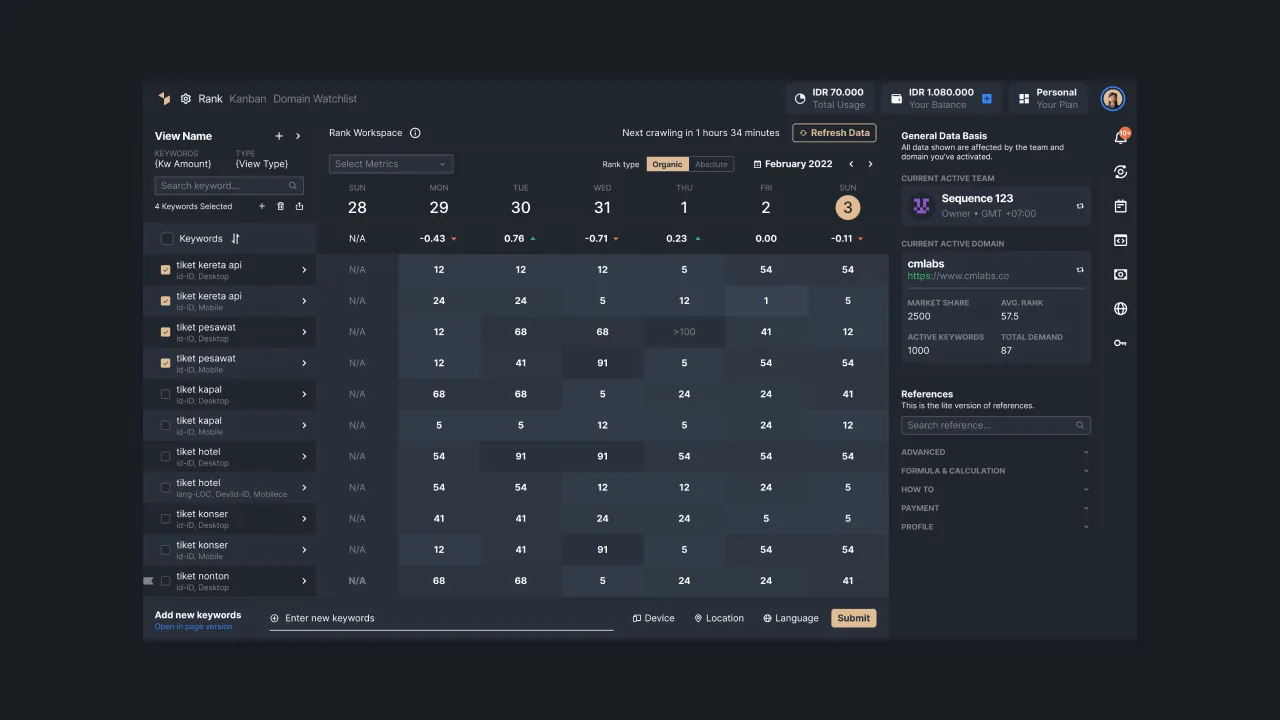How to Conduct Keyword Research for Content Marketing
Content marketing is one of the digital marketing strategies that employ content as the selling point. The content produced should have a high quality and value to readers. Thus, keyword research for content marketing is the starting point.
However, not all keywords are worthy of content creation. You need to have a keyword strategy that targets potential readers. In this article, you will learn how to conduct keyword research for content marketing that can increase the conversion rate.
What Is Keyword Research for Content Marketing?
Keyword research for content marketing is the process of identifying and selecting specific words or phrases (keywords) that your target audience is likely to use when searching for information, products, or services related to your niche or industry.
Effective keyword research ensures that your content aligns with what your target audience is actively searching for. This relevance is essential for capturing the attention of your intended audience and keeping them engaged with your content.
Depending on your niche or geographic focus, keyword research allows you to tailor your content to specific audiences. This is especially important for local businesses and niche industries where generic keywords may not be as effective.
Keyword Criteria for Content Marketing
While it may sound straightforward, there are key criteria to consider when choosing keywords to optimize your content effectively.
1. Relevance
First and foremost, your chosen keywords must be relevant to your content. They should directly align with the topic, subject matter, or theme of your article, blog post, or web page. Irrelevant keywords can confuse both search engines and readers, leading to a high bounce rate and diminished trust in your content.
2. Search Volume
Understanding the search volume of a keyword is crucial. This metric indicates how often a specific keyword or phrase is searched for on search engines like Google. While high-volume keywords may seem enticing, they often come with fierce competition.
Conversely, low-volume keywords might not bring enough traffic to justify the effort. Striking a balance between search volume and competitiveness is key.
3. Competition
Keyword competition assesses how challenging it is to rank for a particular keyword. High-competition keywords are fiercely targeted by numerous websites, making it harder to secure a top position in search results.
On the other hand, low-competition keywords are easier to rank for but may have lower search volumes. Aim for a mix of both, depending on your content strategy and goals.
4. Long-Tail Keywords
Long-tail keywords are longer, more specific phrases that typically have lower search volumes and competition. While they may not bring in as much traffic individually, they often attract a more targeted audience with a higher likelihood of conversion. Incorporating long-tail keywords into your content strategy can be especially effective for niche topics.
5. User Intent
Consider the intent behind a keyword. Are users searching for information, looking to make a purchase, or seeking answers to specific questions? Tailoring your content to match user intent is crucial for attracting the right audience and delivering valuable content that satisfies their needs.
6. Seasonality
Some keywords may be more popular during specific times of the year or in response to certain events. Understanding keyword seasonality can help you plan your content calendar and capitalize on trending topics or products.
7. Geographic Targeting
If your business or content has a geographic focus, consider incorporating location-based keywords to attract local audiences. Geo-targeted keywords can help improve your visibility in local search results.
How to Conduct Keyword Research for Content Marketing
Conducting effective keyword research for content marketing is a crucial step in optimizing your content for search engines and reaching your target audience. Here's a step-by-step guide on how to conduct keyword research:
1. Understand Your Audience and Goals
Before diving into keyword research, have a clear understanding of your target audience. Who are they? What are their interests, needs, and pain points?
In this step, you need to define your content marketing goals. Are you aiming to increase website traffic, generate leads, boost sales, or provide valuable information? Your goals will influence the keywords you target.
2. Brainstorm Initial Ideas
Start by brainstorming a list of topics and keywords related to your industry, niche, or the subject of your content. These initial ideas can serve as a foundation for your research.
3. Use Keyword Research Tools
Utilize keyword research tools to expand your list and gather data. You can useSequence Stats Keyword Ideas to get a long list of keyword ideas that are worth optimizing.
First, go to your Sequence Stats Account, and open the Keyword Idas Dashboard.
 |
|---|
| Picture 1 - Sequence Stats Dashboard |
Here, you need to enter your seed keyword and specify the location target of your keyword.
 |
|---|
| Picture 2 - Keyword Ideas Dashboard. |
Here is an example of keyword ideas result that can be generated. Look at the metrics, there are many important data that can influence your keyword strategy.
 |
|---|
| Picture 3 - Keyword ideas result. |
4. Analyze Keyword Metrics
From the previous step, you can proceed to the next step which is analyzing keyword metrics. In this step, you will need to look at the data such as:
- Keyword Search Volume: The higher the search volume the better. However, look at the competition too.
- Competition: keyword competition indicates how hard it is to rank higher for that keyword. A highly competitive keyword is usually high in the search volume. That is why you need to target the potential search volume with a lower competition.
- Overtime changes: It tells you how this keyword performs over time. Through this data, you can see the keyword trends and potential.
5. Prioritize and Refine
After gathering a comprehensive list of keywords, prioritize them based on relevance, search volume, competition, and your content goals. Next, refine your list by removing irrelevant or less valuable keywords.
That is how to conduct keyword research for content marketing. Remember, the keyword is evolving every time. That is why you need to make sure your content remains relevant by optimizing the keywords used in the content.
To help you stay updated on keywords, you can use Sequence Stats as your all-in-one SEO tool. It is easy to use and able to simplify redundant SEO tasks. Register your account now and enjoy a year of free trial!